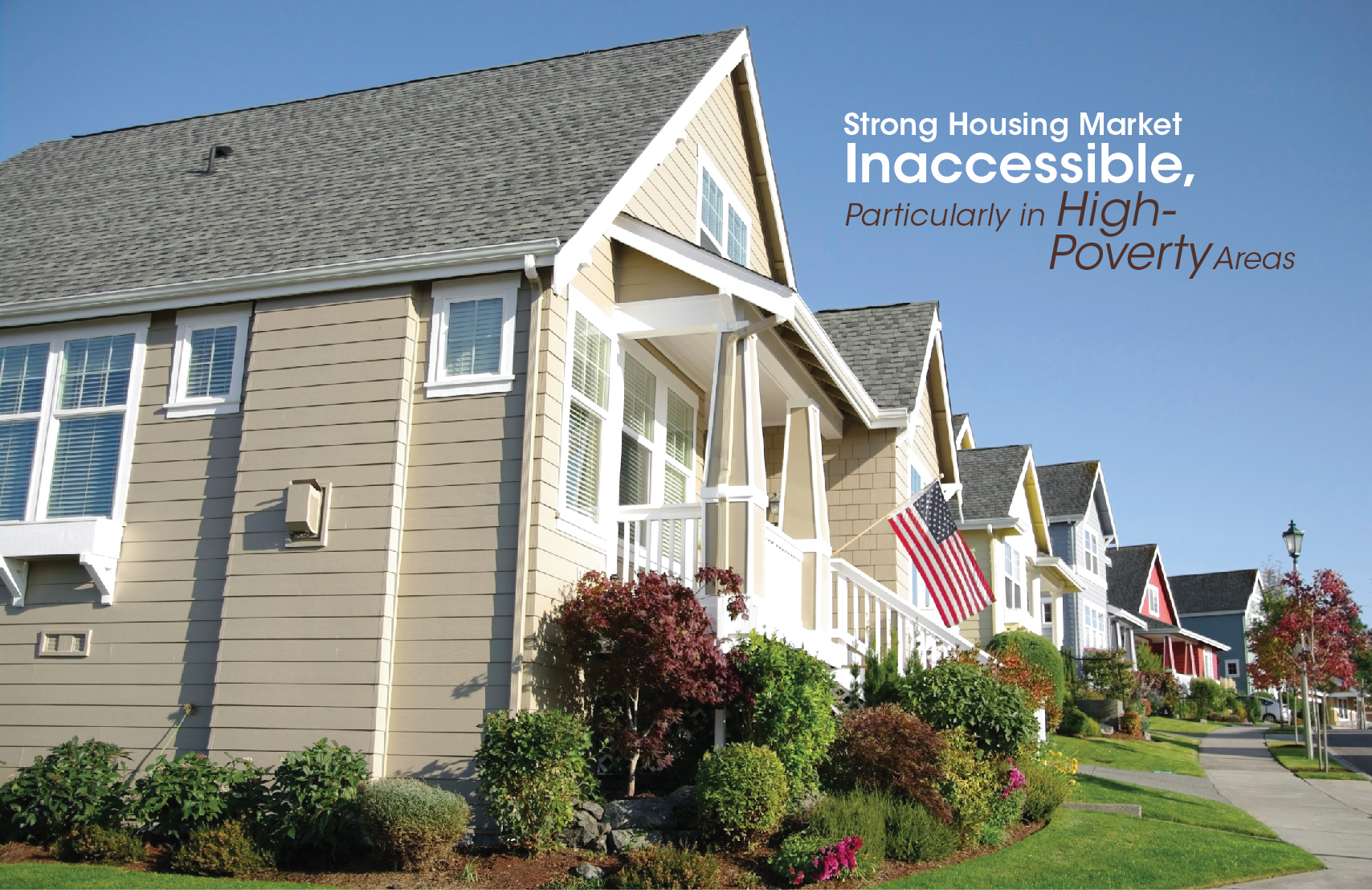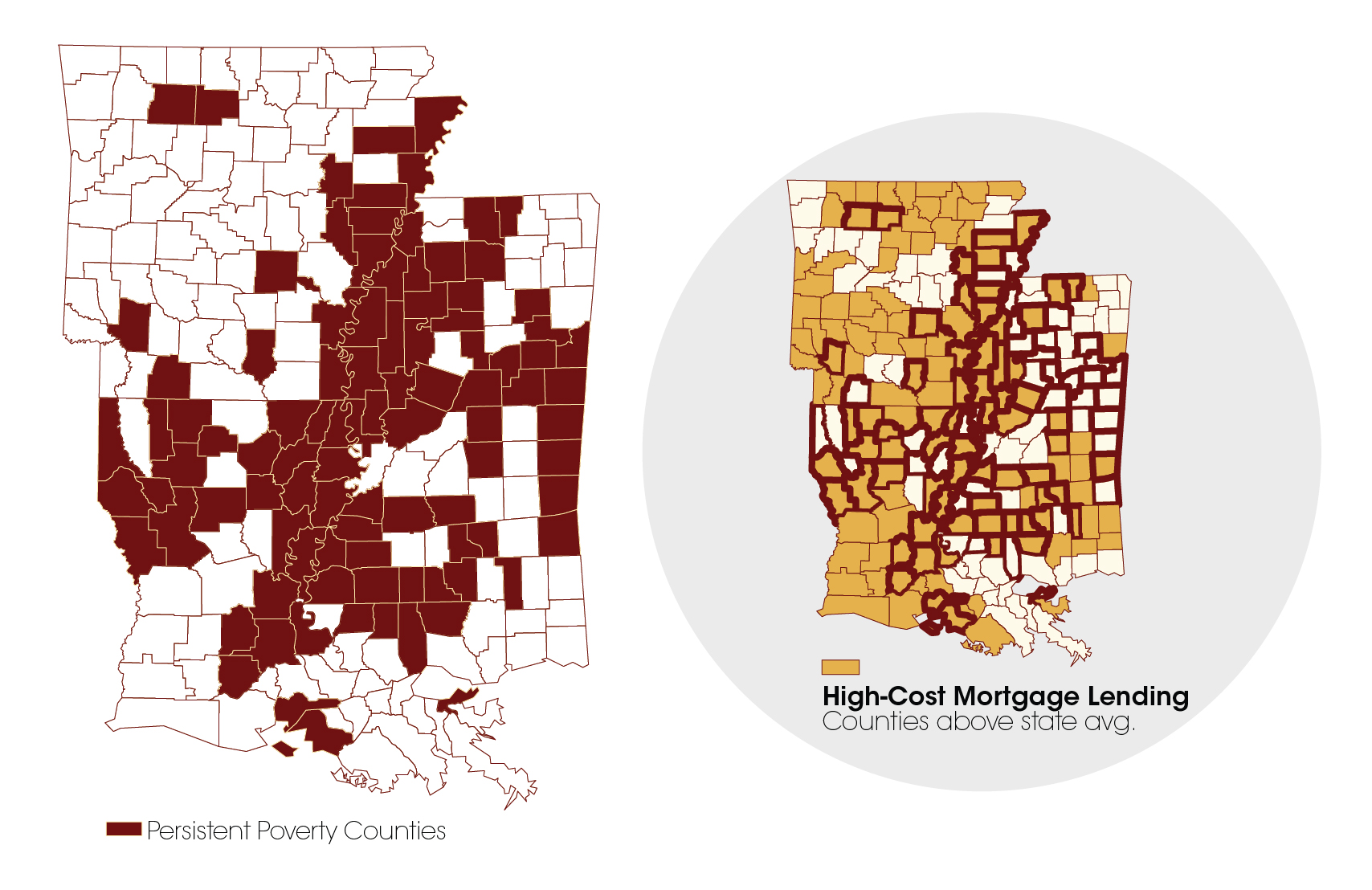Strong Housing Market Inaccessible, Particularly in High-Poverty Areas
January 8th, 2016
A strong housing market in the United States remains inaccessible due in part to a lack of affordable housing, particularly in high-poverty areas. In a recent report, “An Opportunity Agenda for Renters: The Case for Simultaneous Investments in Residential Mobility and Low-Income Communities,” the Center for American Progress explores the relationship between economic opportunity and affordable housing opportunities, or lack thereof. The authors note, a strong housing market has the potential to help families build wealth, attend good schools, and live in communities that are conducive to their overall success (1). However, accessing housing remains a challenge for some Mid South residents and underscores the need for policies that increase investments in high-poverty areas.
Place Matters: Persistent Poverty in the Mid South
In the Mid South, more than one-fourth of counties and parishes are in persistent poverty (a poverty rate greater than 20 percent for at least 30 years). See Map. Louisiana and Mississippi are the only two states where more than half the counties/parishes are classified as persistently impoverished. People who live in these high-poverty areas often lack affordable housing opportunities, as well as amenities that promote economic mobility, like high-quality schools, affordable child care, and access to job markets.
Mid South Persistent Poverty Counties
Housing Affordability Remains a Significant Problem
A large percentage of home purchase loans in the Mid South are high-cost (loans that have a significantly higher-than-average Annual Percentage Rate). See Map. Likewise, an average of 30 percent of mortgaged households and 50 percent of rental households in the Mid South spend more than 30 percent of their household income on selected monthly owner/rental costs (Assets & Opportunity Scorecard, 2015). People burdened by high housing costs oftentimes have trouble investing in necessary resources like food, health care, and transportation, making it even more difficult for families to build wealth and save for future investments.
High-Cost Mortgage Lending
High housing costs are just one of the major implications for people in persistent poverty and make economic mobility even more difficult. The data underscore the need to invest in underserved areas and develop opportunities that foster job creation, affordable housing development, and access to financial services that help create better life outcomes for people in high-poverty areas.
Sources:
Sanchez, D., Ross, T., Gordon, J., Edelman, S., Zonta, M., & Schwartz, A. (2015, December). An opportunity agenda for renters: The case for simultaneous investments in residential mobility and low-income communities. The Center for American Progress. Retrieved from https://www.americanprogress.org/issues/poverty/report/2015/12/16/126966/an-opportunity-agenda-for-renters/
Corporation for Enterprise Development. (2015). Assets and Opportunity Scorecard, 2015. Retrieved from http://assetsandopportunity.org/scorecard/









